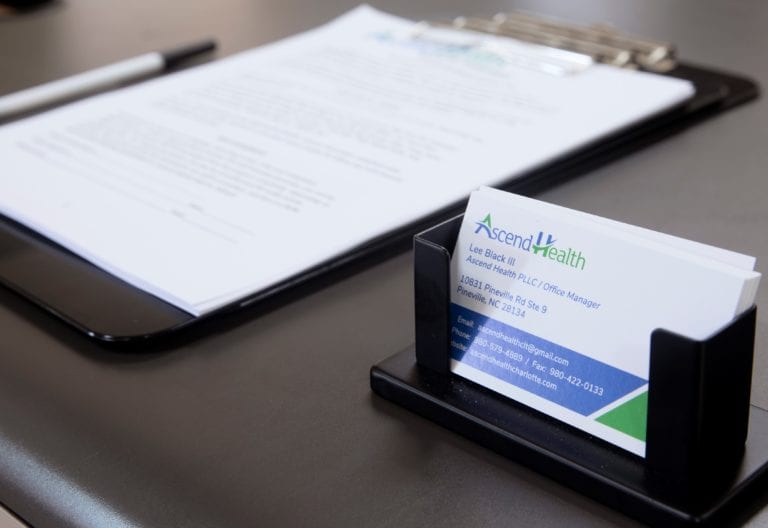When you finish detox or inpatient rehab, choosing an outpatient opioid recovery program covered by insurance can help you maintain momentum without breaking the bank. With most Affordable Care Act–compliant plans now including medication-assisted treatment (MAT) and counseling as essential health benefits, you have a clear path to continuing care. In this guide, you’ll learn how to unlock coverage for relapse prevention, MAT aftercare, and supportive services that keep you on track.
Throughout your recovery, you need a plan that fits your lifestyle, budget, and clinical needs. We’ll walk you through insurance basics, explore MAT aftercare options like Suboxone and Sublocade, outline relapse prevention strategies, and detail the components of a comprehensive outpatient program. By understanding your benefits and working with providers, you’ll maximize your coverage and stay engaged in recovery.
Insurance coverage basics
Navigating insurance is the first step in securing long-term outpatient opioid care. Most health plans, including private policies, Medicaid, and Medicare, cover MAT and associated services under mental health and substance use disorder benefits.
Affordable Care Act mandates
Under the ACA, all qualified health plans must cover substance use disorder treatment, including MAT, counseling, and behavioral therapies. That means you’ll get access to services like buprenorphine and naltrexone with no lifetime dollar limit. Coverage levels vary by plan, so you may have deductibles, copays, or coinsurance.
Medicaid, Medicare and grants
Medicaid programs in every state cover MAT, although benefits differ by state and may require prior authorization. Medicare Part B covers outpatient care, including individual and group therapy, with a 20% coinsurance after your deductible. In fiscal year 2025, HHS allocated over $1.5 billion in continuation funding for State Opioid Response and Tribal Opioid Response grants to expand access to MAT services [1].
State funding and assistance
Many states offer low-cost or free services through state-funded rehab programs. You may qualify if you have limited income, Medicaid coverage, or no insurance. Be aware that waiting lists are common and priority often goes to high-risk groups like pregnant women. In 2022, 48.7 million people needed help for substance misuse but only 13.1 million received treatment, illustrating the demand for publicly funded care [2].
| Plan type | Services covered | Cost factors | Notes |
|---|---|---|---|
| ACA-compliant private plans | MAT, counseling, family therapy | Deductibles, copays, coinsurance | Check summary of benefits for specific limits |
| Medicaid | Buprenorphine, group therapy | Minimal or no copays | State variation in prior authorization process |
| Medicare | Part B outpatient services | 20% coinsurance after deductible | No cap on visits; requires Medicare provider |
| State-funded programs | MAT, counseling, sober housing support | Low or no cost to qualifying members | May have waiting lists |
MAT aftercare options
Medication-assisted treatment is the backbone of an outpatient continuum, reducing cravings and preventing relapse. Two common approaches are Suboxone maintenance and monthly Sublocade injections.
Suboxone maintenance therapy
Suboxone combines buprenorphine with naloxone to curb opioid cravings safely. As you transition from inpatient care, a suboxone maintenance therapy outpatient program offers regular appointments to adjust dosages and monitor progress. Suboxone is covered under most plans as a part of your outpatient MAT.
- Frequency: Weekly or biweekly visits initially
- Services: Medication management, urine drug screens, counseling
- Coverage: ACA plans typically cover close to 100% after deductible
Sublocade injection program
If daily dosing poses challenges, Sublocade delivers monthly extended-release buprenorphine. Insurance carriers often class this under specialty pharmacy benefits. You can enroll in a sublocade treatment with insurance coverage program that coordinates injections, pharmacy billing, and medical oversight.
- Administration: One injection every 28 days
- Benefits: Consistent medication levels, fewer clinic visits
- Coverage considerations: May require prior authorization and step therapy
Relapse prevention strategies
Staying sober involves more than medication. Effective aftercare integrates counseling, peer support, and family involvement to address triggers and build resilience.
Outpatient counseling services
Individual and group therapy help you develop coping skills and address underlying issues. Outpatient settings allow you to practice strategies in real life between sessions. Look for programs offering cognitive behavioral therapy, motivational interviewing, and trauma-informed care.
Telehealth relapse prevention mat
If travel or scheduling is a barrier, a telehealth relapse prevention mat can keep you connected to clinicians via video or phone. Telehealth services often include:
- Weekly virtual therapy and medication check-ins
- Digital relapse prevention modules
- 24/7 coaching hotlines for crisis support
Family therapy integration
Your home environment plays a crucial role in sustained recovery. An outpatient mat with family therapy program guides loved ones on how to support your journey. Family sessions can:
- Improve communication and trust
- Educate on relapse warning signs
- Strengthen your support network
Outpatient treatment components
A comprehensive clinic addresses co-occurring conditions, offers specialty tracks, and uses technology to streamline care.
Buprenorphine maintenance options
Beyond Suboxone, buprenorphine can be prescribed without naloxone. An outpatient buprenorphine treatment program may suit you if you need a simpler dosing regimen. These programs combine medication with therapy and regular monitoring.
Dual diagnosis MAT program
If you have co-occurring mental health disorders, a dual diagnosis mat program ensures both addiction and psychiatric needs are treated in tandem. Integrated care reduces relapse risk and supports holistic healing.
Telehealth suboxone maintenance program
For added convenience, many clinics now offer a telehealth suboxone maintenance program. You receive your prescription, counseling, and lab orders electronically, reducing in-person visits while maintaining clinical oversight.
Maximize coverage benefits
Getting the most from your plan takes proactive steps. Here’s how to ensure seamless access to services.
Verify your insurance plan
Review your Explanation of Benefits or contact your insurer to confirm coverage for:
- MAT medications and pharmacy benefits
- Counseling and group therapy sessions
- Telehealth services
- Sober or recovery housing support
If you’re on Medicaid, search for an outpatient opioid program that takes Medicaid to find in-network providers.
Coordinate with providers
Ask prospective clinics about their billing department’s experience with your insurer. Providers who handle prior authorizations and insurance appeals can expedite your treatment. You may also work with case managers to navigate coverage gaps.
Leverage your support network
Peer support groups, sober living arrangements, and recovery mentoring often cost little to nothing. Some state grants allocate over $45 million for sober housing among young adults [1]. Combining professional care with community resources keeps you engaged and accountable.
Next steps in recovery
You’ve laid the groundwork by understanding coverage and selecting MAT and therapy options. Now it’s time to take action.
Create a personalized care plan
Meet with your treatment team to map out:
- Medication schedule and monitoring
- Therapy frequency and format (in-person or telehealth)
- Family or peer support involvement
- Milestones for dosage tapering or program graduation
Document your plan in writing and revisit it regularly to track progress.
Explore Ascend Health programs
Ascend Health offers a seamless aftercare continuum—from outpatient opioid rehab with Suboxone to relapse prevention MAT treatment to ongoing support groups. Their integrated approach ensures you have medication management, therapy, and community resources all under one roof. Reach out to Ascend Health to discuss how their covered MAT aftercare programs fit your recovery goals.
By understanding your insurance, selecting the right MAT aftercare, and leveraging supportive services, you’ll build a resilient foundation for lasting recovery. Take these steps now to keep moving forward on your journey to health and stability.



